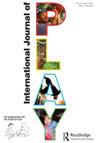Investigating the use of playgrounds by tweens: a systematic observation study
IF 1.2
Q3 EDUCATION & EDUCATIONAL RESEARCH
引用次数: 1
Abstract
ABSTRACT Playgrounds provide a developmental framework for social and physical interactions of children. School playgrounds have been extensively investigated but little research has focused specifically on tweens’ (9–12-year-olds) use of school playground equipment. In this study, we investigated play categories, play equipment use, and play activities of tweens. On four Danish school playgrounds, 991 children were observed by trained observers using The System for Observing Play and Leisure Activity in Youth (SOPLAY). Prevalence of play categories and utilization of play equipment were calculated using SPSS, and activity descriptions were analyzed using thematic analysis. Results showed that physical play and talkative play accounted for 80% of tweens’ play on play equipment and that swings had the highest utilization rate while ball game play equipment had the highest average of users. The highest utilization rate was found on swings and ball game equipment for boys and climbing equipment for girls. Activities were described as hanging out, games with rules, challenging play, and innovative play. Incorporating play equipment that meets the needs of tweens is important to retain their interest in social and physical play. If we want to enhance school playground use by tweens, we must consider physical and talkative play options.调查青少年使用操场:一项系统观察研究
游乐场为儿童的社交和身体互动提供了一个发展框架。学校操场已经进行了广泛的调查,但很少有研究专门关注青少年(9 - 12岁)使用学校操场设备的情况。在本研究中,我们调查了青少年的游戏类别、游戏设备的使用和游戏活动。在四所丹麦学校的操场上,训练有素的观察员使用观察青少年游戏和休闲活动系统(SOPLAY)对991名儿童进行了观察。使用SPSS统计软件计算游戏类别的流行率和游戏设备的使用情况,使用主题分析分析活动描述。结果显示,青少年在游乐设备上的玩耍活动中,身体游戏和交谈游戏占80%,其中秋千的使用率最高,球类游乐设备的平均使用人数最高。使用率最高的是男孩的秋千和球类运动设备以及女孩的攀岩设备。活动被描述为闲逛、有规则的游戏、具有挑战性的游戏和创新的游戏。结合满足青少年需求的游戏设备对于保持他们对社交和身体游戏的兴趣很重要。如果我们想提高青少年对学校操场的使用,我们必须考虑身体和交谈游戏的选择。
本文章由计算机程序翻译,如有差异,请以英文原文为准。
求助全文
约1分钟内获得全文
求助全文
来源期刊

International Journal of Play
Social Sciences-Cultural Studies
CiteScore
1.90
自引率
20.00%
发文量
60
期刊介绍:
The International Journal of Play is an inter-disciplinary publication focusing on all facets of play. It aims to provide an international forum for mono- and multi-disciplinary papers and scholarly debate on all aspects of play theory, policy and practice from across the globe and across the lifespan, and in all kinds of cultural settings, institutions and communities. The journal will be of interest to anthropologists, educationalists, folklorists, historians, linguists, philosophers, playworkers, psychologists, sociologists, therapists and zoologists.
 求助内容:
求助内容: 应助结果提醒方式:
应助结果提醒方式:


